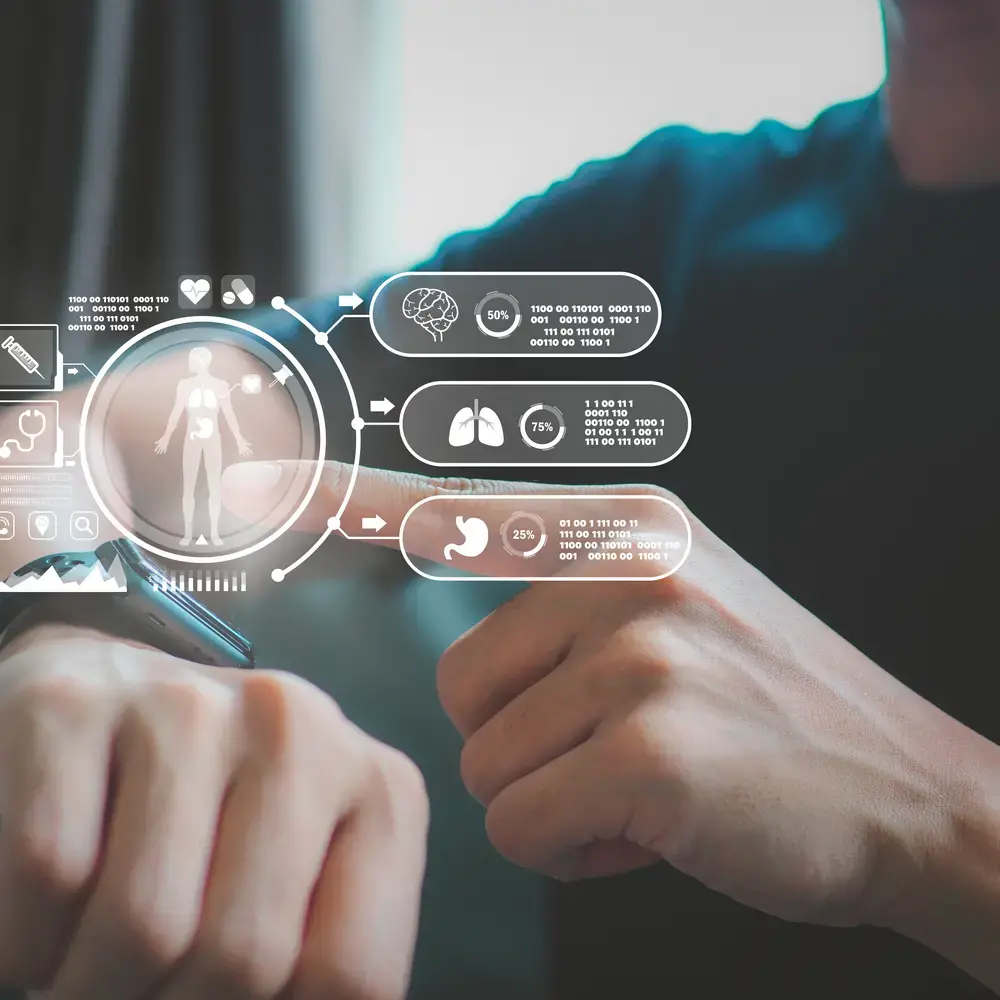The Future of eCOA and Wearable Devices

Electronic Clinical Outcome Assessment (eCOA) wearables have been a major player in the collection of large volumes of patient-reported data. With clinical research generating large and complex datasets at a rapid rate, the value of eCOAs is increasingly apparent, offering new levels of healthcare innovation and convenience in data collection and analysis. In 2022, the value of the global eCOA solutions market was valued at $1.36 billion, with this figure expected to maintain an annual growth rate of 15.2% between 2023 and 2030. Furthermore, experts predict that wearables, namely digital sensors, will be incorporated into 70% of all clinical trials moving forward.
With wearable devices growing more sophisticated, user-friendly, and customizable to individual patient needs, there is significant potential for enhancing patient engagement, compliance, and health outcomes. However, collecting and managing these large datasets is the next challenge researchers face with the increased use of COA wearables.
Advantages of eCOA Wearables
A key feature of eCOA wearables is the capacity to collect large quantities of real-time, continuous PRO data throughout the duration of a trial. Wearables are currently siloed into four distinct groups:
- Wearables/sensors – pulse oximeters and heart rate monitors
- External devices – movement detection, weighing scales, etc.
- Implantable devices – pacemakers and brain pressure sensors
- Ingestibles – core temperature sensors and medication tags
Many traditional PRO data consolidation and analysis methods require patients to complete sometimes lengthy or complex questionnaires or attend frequent appointments, which can introduce non-compliance in subjects. However, wearable devices can potentially augment the quality of data collected without introducing a limiting burden by integrating into patients’ daily routines, resulting in enhanced patient engagement and retention.
The Future of eCOA Wearables in Clinical Trials
- Consumer- vs. Industrial-Grade Devices
A critical consideration when choosing these devices is assessing if they are fit for the intended purpose. Industrial-grade devices are specifically designed for use in clinical research, receiving CE validation and stamped for consistency. These offer higher accuracy and reliability compared to consumer-grade devices, which are designed for general use and may have wider tolerances. Algorithms are used to reduce background noise in both types of devices, but industrial-grade devices are more likely to provide consistent and reliable data. Therefore, it is important to carefully consider the purpose and requirements of the study when choosing between industrial-grade and consumer-grade eCOA devices.
Additionally, while eCOA can provide and store extensive datasets, the true value of these datasets hinges on the ability to extract relevant and actionable information. Wearables facilitate the capture of real-time, objective, and, most importantly, usable data, providing a more comprehensive assessment of a patient’s condition. This enables researchers to parse and interpret the most critical pieces of information in a broader dataset, resulting in more informed decision-making.
- Improved Patient Compliance
There are often concerns expressed regarding patient adherence to and compliance with wearable requirements, such as forgetting to wear devices or incorrectly reporting data, which impacts the reliability of the collected data. To reduce this risk, future collaborations between device manufacturers and clinicians can identify and bridge gaps to design eCOA wearables with the patient in mind. This may involve citing previous patient experiences and modifying the technology accordingly or identifying where user-friendliness/intuitiveness can be enhanced. Techniques may involve using gamification to improve and encourage adherence and more accurate reporting.
- Integration with Healthcare Systems
There are numerous technological and logistical challenges associated with effectively integrating eCOA data with existing healthcare frameworks. For example, rapidly evolving technology in the wearable device space may require increased investment and staff training programs from healthcare providers to support new software.
Collaboration between manufacturers and providers can help to assess existing technological capabilities and mitigate compatibility issues to ensure seamless integration with eCOA systems. With robust training programs, data collection, management SOPs, and a 24/7 support service, healthcare teams may face fewer complexities when operating with future eCOA/existing healthcare technological ecosystems.
Conclusion
eCOA wearables offer significant advantages over traditional COA data collection methods and have transformed clinical trial data collection. As of 2018, the FDA has approved a number of wearable devices for use in clinical trials, indicating recognition of their utility in capturing meaningful data points, with the requirement of ensuring these devices measure changes in patient disposition.
With the rapid evolution of eCOA modalities, additional challenges include ensuring devices are fit for clinical purposes, patient compliance, and integration with enterprise systems. Future landscapes indicate that collaboration between manufacturers, providers, and researchers can best bridge the gaps in existing processes and maximize the potential of eCOA wearables in clinical research.
Want to learn more about optimizing your eCOA data collection and analysis? Reach out to us.
